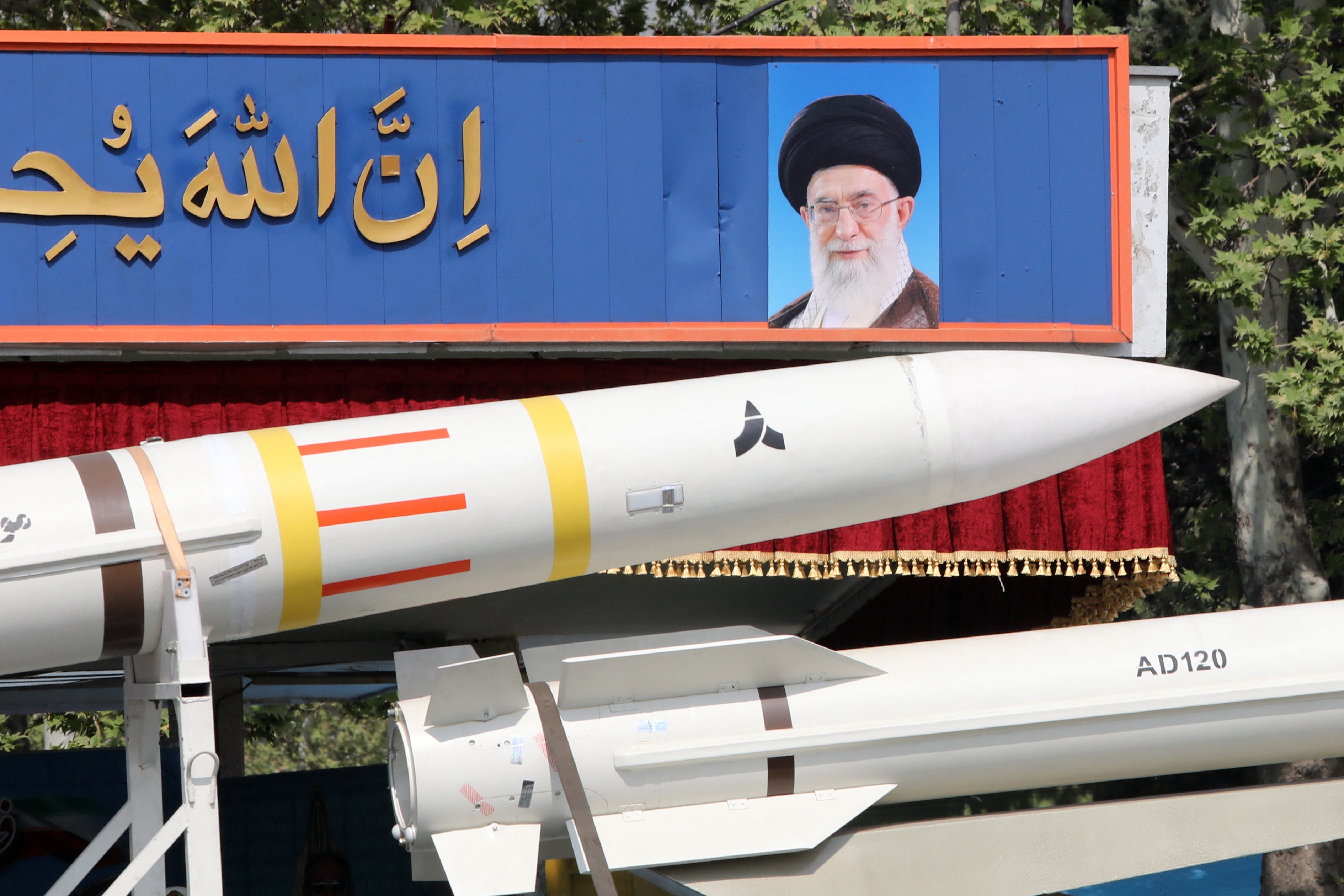The frightening prospect of what Iran could be capable of with a nuclear capacity
As Iran inches closer towards becoming a nuclear power, Camelia Entekhabifard looks at how the world might respond


Amid the turmoil following the assassination of Hamas leader Ismail Haniyeh in Tehran and escalating tensions between Iran and Israel, a significant development concerning Iran’s nuclear programme has emerged.
The US Office of the Director of National Intelligence (ODNI) recently released its 2024 report on Iran’s nuclear programme, omitting a critical sentence that had been included in previous reports: “Iran is not currently undertaking the key nuclear weapons-development activities that would be necessary to produce a testable nuclear device.”
The removal of this sentence suggests that Iran may now be engaging in activities that could lead to the production of a testable nuclear device.
This omission aligns with longstanding concerns expressed over the years by intelligence agencies, Western leaders, and UN officials regarding Iran’s nuclear ambitions.
How will the United States respond to this alarming report?
Former International Atomic Energy Agency (IAEA) director-general Yukiya Amano consistently noted that the IAEA could not confirm the peaceful nature of all of Iran’s nuclear activities. In November 2010, Amano stated that the IAEA could not verify the peacefulness of Iran’s nuclear programme, and by November 2014, he suggested that Iran could rapidly approach nuclear weapon capability.
Israeli prime minister Benjamin Netanyahu warned in May 2018, after the US withdrew from the 2015 nuclear deal – formally known as the Joint Comprehensive Plan of Action (JCPOA) – that Iran could acquire nuclear weapons within months if JCPOA restrictions were lifted.
In February 2020, IAEA chief Rafael Grossi voiced concerns over Iran’s lack of cooperation, indicating that Tehran could potentially amass enough nuclear material for a weapon in the near future.
Former US secretary of state Mike Pompeo also warned in April 2020 that Iran might acquire nuclear weapons within months if it continued to defy international restrictions.
US secretary of state Antony Blinken recently said that Iran could produce enough fissile material to build a nuclear bomb within a week or two.
The IAEA’s Grossi said on 5 August that Iran could enrich enough uranium to build a nuclear bomb within a few weeks to a few months.
The US has repeatedly said that if sanctions fail to curb Iran’s nuclear programme, all options, including military action, remain on the table.
Today, as tensions peak, the United States is sending a flood of military equipment to the region. But is all this support intended solely to defend Israel?
The current situation mirrors past tensions, such as those in April when Iran responded to an Israeli strike on its consulate in Damascus with drone and missile attacks.
The deployment of 16 to 24 F-22 aircraft to Qatar and other military enhancements suggest that the US might be gearing up not just for defence but potentially for a decisive military action against Iran.
I do not believe that the unprecedented deployment of US warships and the arrival of extensive advanced military equipment in the region is solely intended to defend Israel.
The United States has numerous bases throughout the region, including in Turkey, Iraq, Syria, Jordan, Israel, Bahrain, Qatar, the United Arab Emirates, and Egypt, housing approximately 42,000 troops. Additionally, 32 warships have entered the Mediterranean Sea, the Persian Gulf, and other regional waters.
The US has sent the USS Gerald Ford aircraft carrier, the USS Normandy cruiser, and the USS Ramage, USS Carney, and USS Roosevelt destroyers to the Middle East. Simultaneously, the US has increased its deployment of F-35, F-15, and F-16 fighters in the region.
In my opinion, the United States appears to be in the region to target the military and nuclear capabilities of the Islamic Republic, leveraging the current tensions and hostilities.
According to the ODNI report, Iran possesses the largest stockpile of ballistic missiles in the region and continues to enhance the accuracy, lethality, and reliability of these systems. The report also suggests that Tehran has applied insights gained from its April missile and drone attacks on Israel to improve its missile programme.
A key finding in the report is that Iran’s work on space launchers, including the Simorgh, could significantly accelerate its ability to develop intercontinental ballistic missiles, as both systems rely on similar technologies.
The Iranian regime is currently in a stronger position to produce a nuclear bomb, owing to the expansion of its nuclear programme and reduced inspections by the IAEA.
While some analysts suggest that Russian National Security Council secretary Sergei Shoigu’s recent visit to Tehran was intended to dissuade Iran from attacking Israel, it is more likely that the trip aimed to warn the Islamic Republic of a potential imminent US strike on its military and nuclear infrastructure.
The substantial US military buildup in the region indicates a readiness for significant action against Iran’s military and nuclear facilities, beyond merely defending Israel.
Following Shoigu’s visit, the Iranian regime accelerated an unscheduled programme of military and missile manoeuvers in the west of the country, reflecting heightened concerns over a possible large-scale US attack.
The Islamic Republic and the United States have reached a juncture where preventing Iran from advancing towards nuclear weapons requires the destruction of both its missile capabilities and its nuclear infrastructure.
The US goal in such an attack would not be regime change but the dismantling of Iran’s military and nuclear capabilities.
The wars in Ukraine and Gaza have afforded Iran additional time to advance its nuclear programme. However, this opportunity has not gone unnoticed by the United States.
The July report provided to Congress suggests that the increased US military readiness in the region may be aimed at containing Iran’s nuclear programme and addressing its missile and military capabilities decisively.
According to the ODNI report, Iran possesses the infrastructure and expertise to rapidly produce weapons-grade uranium at multiple facilities. This revelation, coupled with the recent assassination of Haniyeh in Tehran and Iran’s retaliatory threats, may present the US with a clearer opportunity to address concerns about Iran’s nuclear and missile programmes.
It is also noteworthy that even Iran’s allies, such as China and Russia, are unlikely to support Tehran’s acquisition of a nuclear bomb.
Whether Tehran has already developed a nuclear bomb or is on the brink of doing so remains to be seen and will likely be clarified in the coming days.






Join our commenting forum
Join thought-provoking conversations, follow other Independent readers and see their replies
Comments